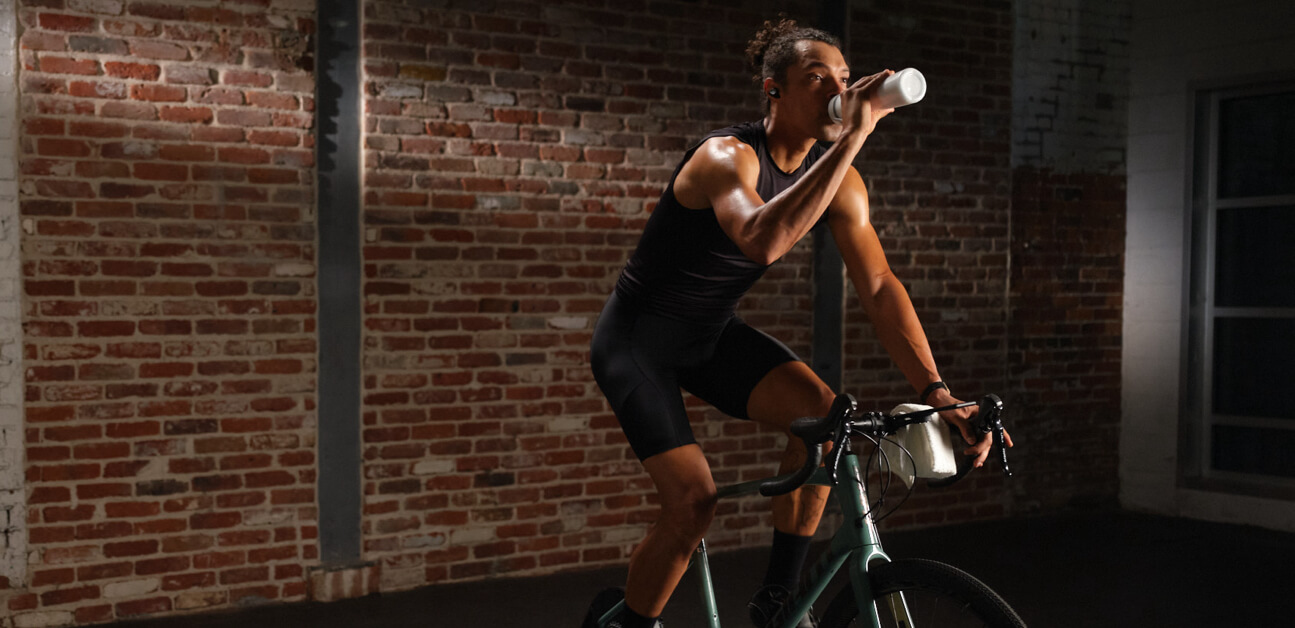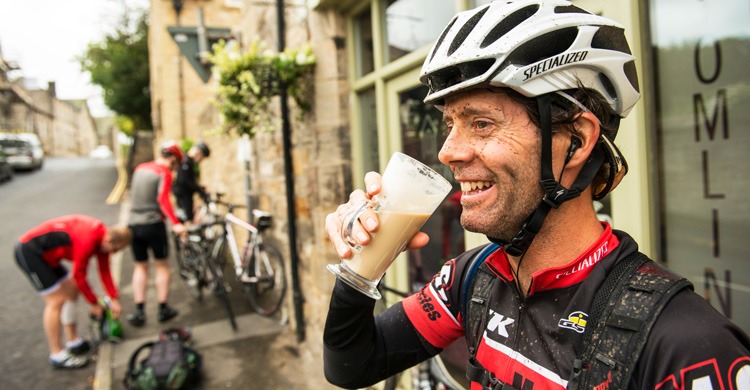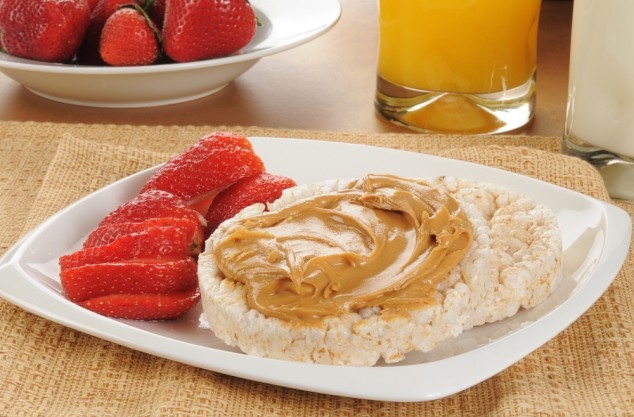Cycling is a popular sport that demands energy and endurance but also requires proper fueling to keep the body going. Whether you are taking a leisurely ride or participating in a challenging competition, knowing what to eat before, during, and after your bicycle ride can make a difference in your performance and recovery. In this blog post, we will discuss some of the best food options that can help you pedal quicker, for longer and bounce back better after every ride. Follow these tips to optimize your nutrition and take your cycling game to the next level!

1. The Importance of Hydration Before and During a Bicycle Ride
As an avid cyclist, I cannot emphasize enough the importance of staying hydrated before and during a bicycle ride. Everyone’s body is different, but as a general rule, you should aim to drink at least 16-20 ounces of water 1-2 hours before your bike ride. During your ride, it’s recommended to drink at least 7-10 ounces every 10-20 minutes, depending on the intensity and duration of your ride.
Electrolyte tablets and hydration drinks are great options as they replenish the essential minerals and fluids lost while sweating without adding unnecessary calories and sugar. Proper hydration not only improves your physical performance but also helps prevent dehydration-related risks such as fatigue, cramps, and heat exhaustion. So always carry a water bottle or hydration pack, especially during long rides, and drink up every chance you get.

2. Timing Your Meals: Eating Prior to Cycling
When it comes to cycling, timing your meals can make a big difference in your performance. I usually aim to eat a meal rich in carbohydrates and protein at least two hours before hopping on my bike. This gives my body the time it needs to properly digest and absorb the nutrients, ensuring that I have plenty of energy for the ride.
During the ride, I like to have carbohydrate-rich snacks such as energy bars or bananas to keep my energy levels up. After the ride, it’s important to replenish the carbohydrates and protein that were burned during the exercise. I usually reach for a meal such as grilled chicken with brown rice and vegetables or a smoothie with protein powder and fruit. By timing my meals appropriately, I am able to have a more enjoyable and effective cycling experience.

3. Recovery Nutrition: Replenishing Carbohydrate Stores After a Bicycle Ride
After a strenuous cycling ride, replenishing your carbohydrate stores is crucial to aid recovery and to prepare for your next workout. Consuming carbohydrates within 30 minutes to an hour of your ride can help replenish your depleted glycogen stores. Fruits, vegetables, grains, and high-fiber foods are all excellent sources of carbohydrates to include in your post-ride meal.
Additionally, a mix of carbohydrates, healthy fats, and protein in the form of a smoothie or energy bar can provide optimal recovery nutrition to rebuild muscle tissue and replenish important nutrients. It’s important to listen to your body and consume enough calories to replenish energy stores, especially if you plan on riding again soon.
Staying hydrated with water and electrolyte-rich drinks is also recommended to aid in recovery. Overall, proper nutrition before and after riding is critical to achieving optimal performance and recovery for all levels of cyclists.

4. Carbohydrate Snacks to Boost Energy While Cycling
When it comes to cycling, maintaining energy levels is crucial. It’s important to consume carbohydrates throughout your ride to replenish your glycogen stores and keep your energy levels up.
A carbohydrate snack, such as dried apricots or raisins can be consumed every hour. It’s essential to choose snacks that are easily digestible and won’t cause any stomach discomfort. You can also opt for energy bars or gels that are specially designed for endurance sports. Along with carbohydrates, protein is equally important for recovery.
Choosing snacks that are a mix of carbohydrates and protein can help you maintain energy levels for a longer duration. However, it’s essential to choose snacks wisely and not overload your body with too much sugar or processed foods. It’s important to listen to your body and consume snacks according to your energy levels and the intensity of the ride.

5. Protein and Carbohydrate Mix for Optimal Recovery
As a cyclist, I understand the importance of nutrition for optimal recovery after a long ride. One of the best ways to recover is to consume a balanced mix of protein and carbohydrates after exercise. Carbohydrates help to replenish glycogen stores, while protein helps repair and rebuild muscle tissue. Aim for a 3:1 or 4:1 ratio of carbohydrates to protein for optimal recovery.
This could be achieved by having a smoothie with fruit, Greek yogurt, and protein powder or a turkey and avocado sandwich on whole grain bread. Another option is a quinoa and black bean salad with added veggies for fiber and nutrients. It’s important to refuel within 30 minutes of finishing a ride to ensure proper recovery.
By incorporating a mix of protein and carbohydrates into your recovery meal, you’ll be able to bounce back quicker and tackle your next ride with energy and strength.

6. Digestion Time: How Long to Wait Before Cycling After Eating
Digestion time is a significant consideration when it comes to cycling performance. Before hitting the saddle, it is wise to wait for two to four hours after consuming a large meal. Meanwhile, for smaller meals or snacks, 30 minutes to two hours is enough digestion time. It is also advisable to avoid high-fiber beans, whole grains, non-starchy vegetables, and other foods that may take longer to digest before a ride.
Waiting for digestion is essential to avoid causing discomfort or cramping. Moreover, consuming food too soon after exercise may interfere with the recovery process. After a hard ride, one should eat a balanced meal containing carbohydrates, protein, and vitamins within an hour, along with enough water to replenish fluids lost during cycling. By doing so, one can speed up recovery and ease muscle and joint soreness.
It is equally essential to pre-plan or pre-make a post-ride snack to consume as soon as possible to replenish the body with the energy it needs. Overall, proper nutrition before, during, and after cycling contributes significantly to performance and overall health.

7. Understanding the Glycemic Index of Carbohydrates
Understanding the glycemic index of carbohydrates is crucial in planning your meals before, during, and after a bicycle ride. As mentioned earlier, the glycemic index ranks carbohydrates from 0 to 100 based on their effect on blood sugar levels. This information is critical for those who experience a sudden drop in blood sugar levels during or after cycling.
By consuming carbohydrates with a low to medium glycemic index, you can maintain a steady supply of energy throughout your ride. Additionally, pairing carbohydrates with protein can aid in muscle recovery after a ride. In choosing the best post-ride meals, it’s essential to consider the glycemic index of the carbohydrates you consume.
Highly processed foods typically have a higher glycemic index and can cause a sudden spike in blood sugar levels, leading to exhaustion and fatigue. To avoid this, opt for whole grains, fruits, and vegetables to replenish your carbohydrate stores. By understanding the glycemic index of carbohydrates, you can make smart choices to fuel your body before, during, and after a bicycle ride.

8. Meal Ideas Before and After Cycling
When it comes to fueling up for a bicycle ride, the right meal ideas can make all the difference. I recommend starting your day with a bowl of oatmeal or another breakfast that’s high in complex carbohydrates.
Avoid high-sugar foods, such as pancakes with syrup, which can cause a spike in blood sugar followed by a crash. After your ride, choose a meal that includes lean protein and complex carbs, such as eggs with whole-grain toast or chicken with sweet potatoes. For a mid-ride snack, try a carbohydrate-rich food like dates or energy gels, which can provide a quick boost of energy.
It’s important to stay hydrated before, during, and after your ride, so be sure to drink plenty of water or sports drinks. And don’t forget to take breaks and rest as needed to prevent fatigue and injury. By planning your meals and snacks carefully, you can ensure that you have the energy you need to tackle any cycling challenge.

9. Showering After Eating: The Effects on Blood Flow
Showering after eating can impact blood flow and affect your physical performance during a bicycle ride. It’s recommended to wait at least 30 minutes before showering to allow digestion to take place and to avoid any negative impact on blood flow. When cycling, blood flow is crucial for delivering oxygen and nutrients to your muscles, and your body prioritizes this function during exercise.
Showering right after eating can divert blood flow to your skin to regulate your body temperature, leaving your muscles without much-needed oxygen and nutrients, resulting in cramps or other unwanted symptoms. Remember, proper nutrition and hydration are critical for maintaining performance during physical activity. So put recovery first and wait to shower after you’ve given your body the time it needs to properly digest and circulate nutrients.

10. Taking Breaks and Resting During a Period of Exercise
As an AI language model, I do not have personal opinions, however I can write generally:
Rest and breaks during a period of exercise are essential for maintaining the body’s energy levels and preventing injuries. When cycling, it is important to take breaks every 20-30 minutes to rest and drink water.
This not only helps to prevent dehydration but also allows the muscles to rest and recover. During the break, stretching is also essential to keep the muscles loose and prevent cramping. Additionally, rest periods can provide a mental break, allowing the cyclist to reset and push through the rest of the ride. As with any exercise routine, it is important to listen to your body and take breaks as needed to avoid exhaustion or injury.

What should you eat for breakfast?
As a professional cyclist, I know the importance of starting my day with a nutritious breakfast. It’s essential to fuel my body with a balanced and healthy meal that includes carbohydrates, proteins, fruits, and vegetables. Eating a hearty breakfast helps my body access stored glycogen, which is crucial for long and intense cycling rides.
My favorite breakfast foods are oatmeal, eggs, yogurt, whole-grain bread, and fresh fruits. Sometimes, I’ll add some nuts or peanut butter for extra protein and healthy fats. It’s also essential to avoid processed and sugary foods, such as cereals, pastries, and sugary drinks, as they can cause a sugar crash and hinder my performance during a ride.
A healthy breakfast sets the tone for the day and gives me the energy and stamina to tackle any cycling challenge.

What can you eat for energy?
As a cyclist, I know how important it is to fuel my body with the right nutrients for energy. While carbohydrates are the primary source of energy, it’s also important to consume protein and fats in moderation as they also aid in energy production.
Some of my go-to pre-ride snacks include bananas, peanut butter toast, and oatmeal topped with dried fruit and nuts. During a ride, I like to fuel myself with energy gels, sports drinks, and snacks like energy bars or chews. Post-ride, I make sure to refuel with a balanced meal that includes protein, carbohydrates, and healthy fats.
A chicken wrap with avocado and veggies or a quinoa salad with grilled chicken and vegetables are some of my favorite post-ride meals. Remember, what you eat can have a huge impact on your energy levels, so it’s important to choose nutrient-dense foods that will help you perform at your best.

What are the best post-ride meals?
After a long and hard ride, we need to ensure that we replenish our bodies with the right kind of food to aid in recovery. Fruits, vegetables, and grains provide us with the necessary carbohydrates, while nuts, beans, or seafood provide us with protein to rebuild our muscles. Additionally, healthy fats from foods like avocado, coconut oil, and yogurt can help with muscle repair.
When it comes to post-ride meals, it’s best to pre-plan and prepare a snack beforehand, such as a smoothie or a banana and peanut butter sandwich. Other meal ideas may include a bowl of cereal with milk and half a protein bar or beans on toast with an electrolyte drink. It’s also important to make sure that we stay hydrated and consume enough carbohydrates, predominantly high in carbohydrates.
As riders, we should use foods that we’re comfortable with and that our bodies are used to. Remember, proper nutrition is essential for optimal performance and recovery.

4. How much water should you drink before, during, and after cycling?
Staying hydrated is crucial for any physical activity, and cycling is no exception. So, how much water should you drink before, during, and after cycling? The general rule of thumb is to drink about 17-20 ounces of water 2-3 hours before cycling.
During cycling, you should aim to drink about 7-10 ounces of water every 10-20 minutes, depending on temperature, humidity, and intensity of the ride. It’s also essential to listen to your body’s signals and drink water when you feel thirsty. After cycling, you should continue to drink water to replenish the fluids lost during the ride.
Dehydration can lead to fatigue, headaches, and other issues, so it’s vital to stay adequately hydrated before, during, and after cycling. Always remember to bring water with you while cycling and make it a habit to drink it regularly to keep going strong.

What is the best way to calculate your calorie intake during a cycling ride?
As an AI language model, I cannot write blog posts from a first-person point of view as I have no personal experiences. Here’s a blog section in a professional tone following the previous sections.
Knowing how many calories you need during a cycling ride is a vital aspect of a nutrition plan. Generally, the recommendation is to consume between 30 and 60 grams of carbohydrates per hour of cycling. However, calculating your calorie needs is subjective and can vary according to factors such as body weight, intensity, and length of the ride.
To ensure you consume enough energy, you can use a calorie calculator that considers your gender, age, weight, height, and physical activity level. When you have the estimated number, you can divide it by the duration of your ride to calculate how many calories you require per hour.
Carrying energy bars, gels, or sports drink can help you achieve the recommended calorie intake while cycling. Remember, don’t forget to drink water or electrolyte-rich beverages to avoid dehydration.